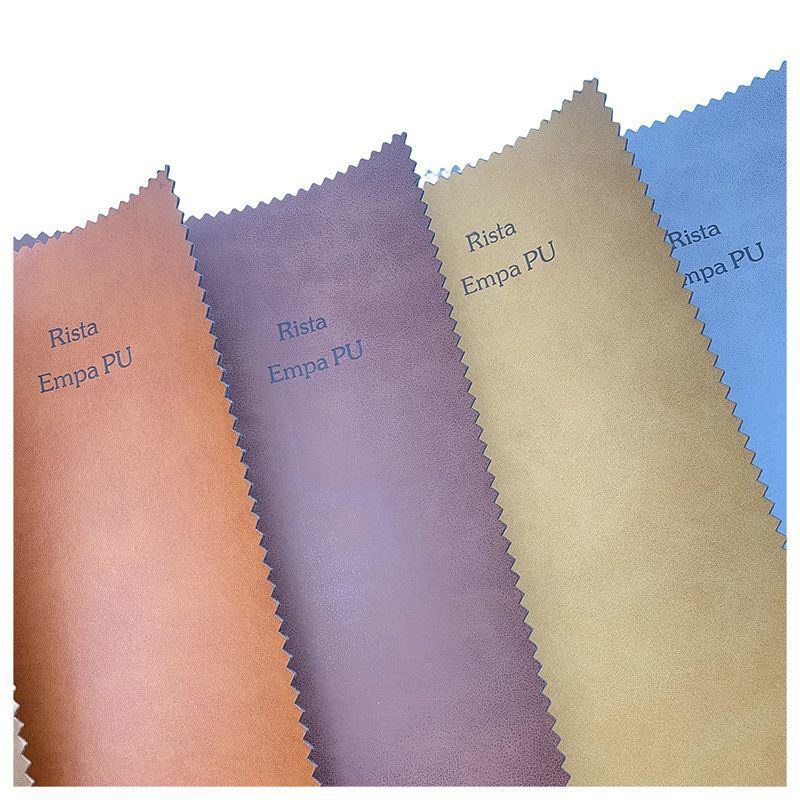Exploring Rexine Book Binding Leather: A Practical Guide for Textile Enthusiasts
Aug 15,2025

Rexine, a synthetic leather, has become a favored material for book binding, especially in projects where traditional leather might be too costly or impractical. This versatile material is made from a base fabric, often cotton or linen, coated with a layer of PVC (polyvinyl chloride) or PU (polyurethane). This process allows rexine to mimic the look and feel of genuine leather while offering several distinct advantages.
One of the most notable features of rexine book binding leather is its durability. Unlike natural leather, which can be susceptible to wear and tear, rexine is more resistant to scratches, moisture, and stains. This makes it an ideal choice for book covers that are meant to endure frequent handling and use. Moreover, rexine does not require the same level of maintenance as genuine leather, which often needs conditioning and special cleaning products to preserve its appearance.
Another significant benefit of using rexine in book binding is its availability in a wide range of colors, textures, and finishes. This variety allows creators to select materials that suit their design preferences and project requirements. Whether you’re looking for a glossy finish, a matte look, or a textured surface that mimics the grain of leather, rexine can fulfill these needs. This flexibility also means that rexine can be used not only for traditional book covers but also for journals, planners, and other handcrafted paper goods.
Additionally, rexine is an excellent option for those who prioritize ethical considerations in their crafting choices. As a synthetic product, it does not involve the use of animal hides, aligning with vegan and cruelty-free values. This aspect has gained traction among consumers who are increasingly aware of the ethical implications of their purchases.
When it comes to working with rexine for book binding, it's essential to use the right adhesives and tools. Specialty adhesives designed for synthetic materials will ensure a strong bond, while cutting tools with precision blades can help achieve clean edges. Seam finishes can be applied to enhance the durability and aesthetics of the binding.
In conclusion, rexine book binding leather is a practical and attractive alternative for those involved in textile and leather crafts. Its durability, variety, and ethical considerations make it a compelling choice for both amateur and professional bookbinders. Whether you are creating a personal journal or producing a larger quantity of items for sale, rexine offers the versatility and reliability needed in modern crafting.
One of the most notable features of rexine book binding leather is its durability. Unlike natural leather, which can be susceptible to wear and tear, rexine is more resistant to scratches, moisture, and stains. This makes it an ideal choice for book covers that are meant to endure frequent handling and use. Moreover, rexine does not require the same level of maintenance as genuine leather, which often needs conditioning and special cleaning products to preserve its appearance.
Another significant benefit of using rexine in book binding is its availability in a wide range of colors, textures, and finishes. This variety allows creators to select materials that suit their design preferences and project requirements. Whether you’re looking for a glossy finish, a matte look, or a textured surface that mimics the grain of leather, rexine can fulfill these needs. This flexibility also means that rexine can be used not only for traditional book covers but also for journals, planners, and other handcrafted paper goods.
Additionally, rexine is an excellent option for those who prioritize ethical considerations in their crafting choices. As a synthetic product, it does not involve the use of animal hides, aligning with vegan and cruelty-free values. This aspect has gained traction among consumers who are increasingly aware of the ethical implications of their purchases.
When it comes to working with rexine for book binding, it's essential to use the right adhesives and tools. Specialty adhesives designed for synthetic materials will ensure a strong bond, while cutting tools with precision blades can help achieve clean edges. Seam finishes can be applied to enhance the durability and aesthetics of the binding.
In conclusion, rexine book binding leather is a practical and attractive alternative for those involved in textile and leather crafts. Its durability, variety, and ethical considerations make it a compelling choice for both amateur and professional bookbinders. Whether you are creating a personal journal or producing a larger quantity of items for sale, rexine offers the versatility and reliability needed in modern crafting.






